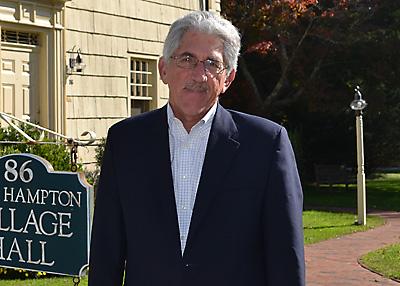Permit Revoked for Fort Pond Lot
Permit Revoked for Fort Pond Lot

Laura Michaels of Edgemere Road received a hearty round of applause from the Montauk Citizens Advisory Committee on Monday after reporting that she had succeeded in having a building permit revoked for a house about to be built next to hers, on the banks of Fort Pond.
Noelle and Thomas Twiggs of New York City, the owners of an acre-plus lot at 85 Edgemere Road, have proposed a 2,437-square-foot house with 1,225 square feet of decking and a retaining wall, sanitary system, and driveway on property adjacent to freshwater wetlands.
Their initial application, which was later modified, called for two floors that would violate the “pyramid” law; five bedrooms, each with a bathroom; a five-foot crawl space, and a 2,000-square-foot deck. At some point in the past the East Hampton Town Zoning Board of Appeals had granted several variances to allow construction, but Ms. Michaels said she realized that others, specifically setback variances, were needed as well.
“I knew I needed to hire an attorney,” she told the committee. She retained Christopher Kelley of Twomey, Latham, Shea, Kelley, Dubin, and Quartararo in Riverhead.
She produced copies of a letter dated April 30 from Tom Preiato, the town’s senior building inspector, stating that he had revoked the building permit until the additional variances were obtained. The east side of the property requires a 20-foot setback from the property line, where 11.6 feet is proposed, and the north side needs a five-foot variance from the 20-foot standard. A pyramid variance for the height of the structure is necessary as well, Mr. Preiato said.
Backed up by Lawrence Cook, who has been raising money for the Montauk Indian Museum, Ms. Michaels told the committee that several thousand artifacts were found during an archeological dig at the site. Mr. Cook, who is known for scouting the hamlet for ancient and Indian artifacts, said arrowheads, pots, and shark and seal remains found there indicate it was once used for cooking, and called the site both sensitive and significant.
Ms. Michaels said the land slopes steeply down to a deep basin in the environmentally sensitive pond, said to be the second-largest freshwater pond on Long Island and a significant coastal fish and wildlife habitat that supports one of three smallmouth bass populations.
The archeological boundaries do not extend off the property, she told the committee, adding that because of the archeological associations the parcel is eligible for nomination to the state and National Historic Register. When she learned it was up for sale, she said, she approached the owner, Timothy Hogan, to ask if he would consider allowing the town to purchase it with money from the community preservation fund. She said Mr. Hogan thought that was a great idea.
She then called Scott Wilson, the town’s director of land acquisition and management, and, she said, was told that the parcel was already on the preservation fund committee’s radar. It was scheduled for discussion by the committee at the end of November 2011.
Ever since, Ms. Michaels said, she had thought the property would be purchased and preserved by the town, until she learned that Mr. Hogan had sold it to an outside buyer for $575,000.
She vowed to keep fighting. The committee gave her its unanimous support with no abstentions, which is a rarity for the Montauk group.
East Hampton Town Councilman Dominick Stanzione, the board’s liaison to the Montauk advisory committee, told the board about the discussion the next day. After his report, the town attorney, John Jilnicki, clarified that the owners had applied for and been granted a natural resources special permit and three variances, but that they still need the three variances mentioned above.






